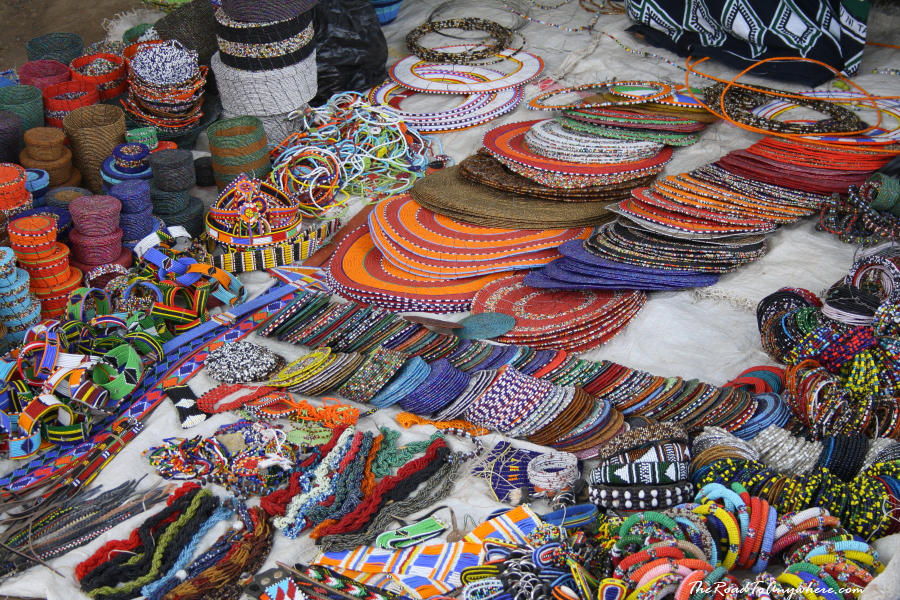Walking through the vibrant markets of Tanzania, one can almost feel the ancient echoes of indigenous artisans meticulously crafting their works. Have you ever considered how these intricate pieces encapsulate centuries of tribal history and culture? For connoisseurs, acquiring these items isn’t just shopping; it’s preserving a piece of Africa’s rich heritage.
Tanzania boasts some of the best places to acquire authentic tribal art and crafts. Locations such as the Maasai Market in Arusha and the Mwenge Carvers’ Market in Dar es Salaam offer an array of goods, reflecting the diversity of the country’s 120-plus tribes. In fact, industry experts estimate that these markets contribute significantly to the local economy, supporting countless artisans and their families.

Tanzania’s Tribal Art and Crafts: Best Places to Shop
The Maasai Market in Arusha is a vibrant spot to begin your journey into Tanzanian tribal art. This bustling market offers a plethora of handmade crafts, ranging from beaded jewelry to colorful textiles. Here, you can find unique items crafted by the Maasai people, known for their exceptional skill in beadwork. The atmosphere is lively, with vendors eager to share the stories behind their creations. Shopping here supports local artisans directly, ensuring your purchase has a positive impact.
Another fantastic destination is the Mwenge Carvers’ Market in Dar es Salaam. This market is famed for its intricately carved wooden pieces, representing various tribes across Tanzania. The artistry seen here is unparalleled, with detailed sculptures that tell stories of the country’s rich history. In addition to carvings, you can find paintings, textiles, and jewelry. Exploring this market offers a deep dive into Tanzania’s cultural diversity.
For fans of contemporary folk art, the Tingatinga Art Center is a must-visit. Located in Dar es Salaam, this center showcases the whimsical and vibrant paintings of the Tingatinga style. Created by Tanzania’s own Edward Saidi Tingatinga, this art form has gained global recognition. The paintings often feature vivid colors and bold designs, depicting scenes from everyday life and wildlife. Visitors can meet artists in person, gaining insight into their creative processes.
If you prefer curated collections, there are several galleries and shops in major cities. These include the Cultural Heritage Centre in Arusha and the Slipway in Dar es Salaam. Here, you can find high-quality pieces that have been carefully selected for their craftsmanship. These places also offer a wide range of products, ensuring that there’s something for every taste and budget. For those unable to travel, many of these shops also provide online shopping options.
1. Maasai Market in Arusha
The Maasai Market in Arusha is an iconic destination for anyone seeking authentic Tanzanian crafts. Bursting with color and energy, it’s a place where shoppers can find unique souvenirs crafted by skilled Maasai artisans. From handcrafted beadwork to traditional clothing, each piece tells a story of the Maasai people’s rich heritage. Tourists and locals alike flock to the market, making it a bustling and dynamic shopping experience. The vibrant atmosphere ensures there’s always something new to discover.
Visitors to the Maasai Market are often captivated by the intricate beadwork on display. Necklaces, earrings, and bracelets are meticulously crafted using traditional methods passed down through generations. The vibrant patterns and colors of these pieces reflect the Maasai culture and their connection to the land. Additionally, many vendors are happy to explain the significance behind their designs, enriching the shopping experience. Buying these items supports the artisans directly, providing them with a sustainable income.
Beyond jewelry, the market is a treasure trove of other crafts. Beautifully woven baskets, colorful textiles, and hand-carved wooden items are just a few examples of what you might find. These items are perfect for decorating homes or giving as gifts. Exploring the market’s various stalls is like stepping into a gallery of traditional Tanzanian artistry. With each purchase, visitors take home not just a souvenir, but a piece of Tanzanian culture.
For those interested in meeting the artisans, the market provides an excellent opportunity. Many of the vendors are the artists themselves, offering direct insight into their work. This personal interaction adds an extra layer of appreciation for the crafts. Furthermore, haggling is a common practice at the Maasai Market, providing a chance to engage with the vendors and enjoy a more interactive shopping experience. It’s a must-visit for anyone exploring Arusha.
2. Mwenge Carvers’ Market in Dar es Salaam
The Mwenge Carvers’ Market in Dar es Salaam provides an immersive experience into Tanzania’s art culture. Known for its masterful wood carvings, the market demonstrates diverse tribal artistry. Walking through the market, visitors encounter detailed sculptures depicting wildlife, daily life scenes, and more. The skill and dedication of the artisans are evident in every piece. A visit here is both visually and culturally enriching.
At Mwenge Carvers’ Market, the craftsmanship goes beyond just wood carvings. You can also find beautifully crafted paintings and intricate masks. These items often carry deep cultural significance. Additionally, many of the artisans use sustainable materials, ensuring their work is environmentally friendly. This makes it an ideal spot for those who appreciate both art and sustainability.
The market features numerous stalls, each offering a unique collection of items. From small souvenirs to large decorative pieces, there’s something for every taste. The variety ensures that visitors can find something special, whether it’s a finely carved animal figure or a colorful tapestry. Moreover, the friendly vendors are always willing to share the stories behind their works.
For a more interactive experience, Mwenge Carvers’ Market also allows visitors to watch the artisans at work. This behind-the-scenes look adds a fascinating dimension to the shopping experience. Observing the creative process provides a deeper appreciation for the skill and effort involved. Interacting directly with the artists makes each purchase more meaningful and personal. It’s a fantastic way to connect with Tanzanian culture.
3. Tingatinga Art Center
The Tingatinga Art Center in Dar es Salaam is a vibrant hub for lovers of colorful and expressive artwork. Founded by the legendary Edward Saidi Tingatinga, the center showcases paintings that capture the essence of Tanzanian daily life and wildlife. The distinctive style features bright colors and bold outlines. Visitors are drawn to the whimsical and story-telling nature of the pieces. This art form has gained immense popularity both locally and internationally.
Besides browsing the artworks, visitors can meet the artists and learn about their creative process. This personal interaction adds to the overall experience, making it more than just a visit to an art gallery. Many artists are happy to share their inspiration and techniques. Watching them work provides a glimpse into the dedication required for each piece. This engagement adds a rich, educational layer to the visit.
The Tingatinga Art Center also plays a crucial role in promoting Tanzanian culture. By preserving and spreading the Tingatinga style, the center ensures this unique art form continues to thrive. The center offers various programs and workshops, encouraging new generations to learn and appreciate this distinctive style. It’s a space where tradition meets modernity, fostering a creative community. This dedication has helped the center become a cultural landmark.
For those looking to purchase art, the center offers a wide array of pieces for sale. From small, affordable items to larger, more expensive paintings, there is something for every budget. The proceeds support the artists and help maintain the center. Buying a piece from the Tingatinga Art Center means taking home a bit of Tanzanian culture. Each artwork serves as a reminder of the rich and vibrant heritage of the country.
In addition to paintings, the center sometimes features other crafts, such as sculptures and textiles. These items offer a more extensive view of Tanzanian artistry. The mix of different forms of art is both eye-catching and educational. Exploring these unique crafts can inspire creativity and a deeper appreciation for Tanzanian culture.
Exploring the Diversity of Tanzanian Tribal Crafts
Tanzania is a treasure trove of diverse tribal crafts, each reflecting the unique traditions of the myriad ethnic groups. The country boasts more than 120 tribes, and each brings its own artistic flair. From the intricate beadwork of the Maasai to the delicate weaving of the Makonde, the variety is staggering. These crafts not only represent cultural identity but also serve functional purposes in daily life. For example, many tribes create elaborate ceremonial masks and tools used in their rituals.
The Makonde tribe, known for their wood carvings, creates some of the most sought-after pieces. Their carvings often depict human figures, animals, and mythological scenes. These artworks are rich in detail and carry deep symbolic meanings. The Makonde’s mastery of ebony wood has made their sculptures famous worldwide. Owning a piece from this tribe is like holding a piece of Tanzanian history.
In addition to wood carvings, Tanzanian textiles are a highlight of the country’s tribal crafts. The Kanga and Kitenge fabrics are vibrant and colorful, often adorned with meaningful Swahili sayings. These textiles are used in various ways, from everyday clothing to elaborate ceremonies. The striking patterns and colors tell stories and convey messages. They are an essential part of Tanzanian cultural expression.
Beadwork is another prominent craft, particularly among the Maasai tribe. Their beaded jewelry and accessories are known for their bright colors and intricate designs. These beads are not merely decorative; they hold significant meaning. The colors used can represent different stages of life, social status, or marital status. Each piece of Maasai beadwork is a tiny narrative of personal and communal identity.
Lastly, Tanzanian pottery, particularly from the Chaga and Pare tribes, adds another layer to the diverse craft scene. These pots are often used for cooking, storage, and even as ritualistic items. The techniques used in making these pots have been passed down through generations. They combine both utility and aesthetics, showcasing the ingenuity of Tanzanian artisans. Exploring these crafts reveals the rich tapestry of Tanzanian culture.
Tips for Shopping Tribal Art in Tanzania
Shopping for tribal art in Tanzania is an enriching experience, but knowing a few tips can make it even better. First, always buy directly from the markets or designated craft centers. This ensures your money goes straight to the artisans, supporting their livelihoods. Additionally, it helps in preserving the authenticity of the craft. Look for certification or provenance when buying from galleries to ensure you’re getting genuine pieces.
Haggling is a common practice in Tanzanian markets, so don’t shy away from negotiating the price. However, remember to be respectful and fair. A good strategy is to start with an offer around 60-70% of the asking price. This sets a good starting point for the negotiation process. Engaging in friendly banter while haggling can also make the experience enjoyable.
It’s also important to educate yourself about the different types of crafts and their cultural significance. This knowledge not only enriches your shopping experience but also helps you make informed purchases. Knowing the background of an item makes it more valuable to you. For example, learning about the symbolism in Maasai beadwork adds depth to owning a piece of jewelry.
Be mindful of the materials used, especially if you’re concerned about sustainability. Some crafts are made from endangered or protected materials. Ask the vendor about the sources of the materials to ensure eco-friendly practices. Opting for sustainable products supports ethical and responsible shopping.
Lastly, consider the logistics of transporting your purchases. Large or fragile items may require special packing and shipping arrangements. Some markets and galleries offer shipping services, so inquire about these options. This ensures your art pieces arrive safely at your home. Keep these tips in mind to make your shopping experience memorable and meaningful.
Key Takeaways
- Tanzania offers amazing spots for tribal art shopping.
- Maasai Market in Arusha is great for beadwork.
- Mwenge Carvers’ Market features beautiful wooden carvings.
- Tingatinga Art Center showcases vibrant paintings.
- These places highlight Tanzania’s rich cultural heritage.














